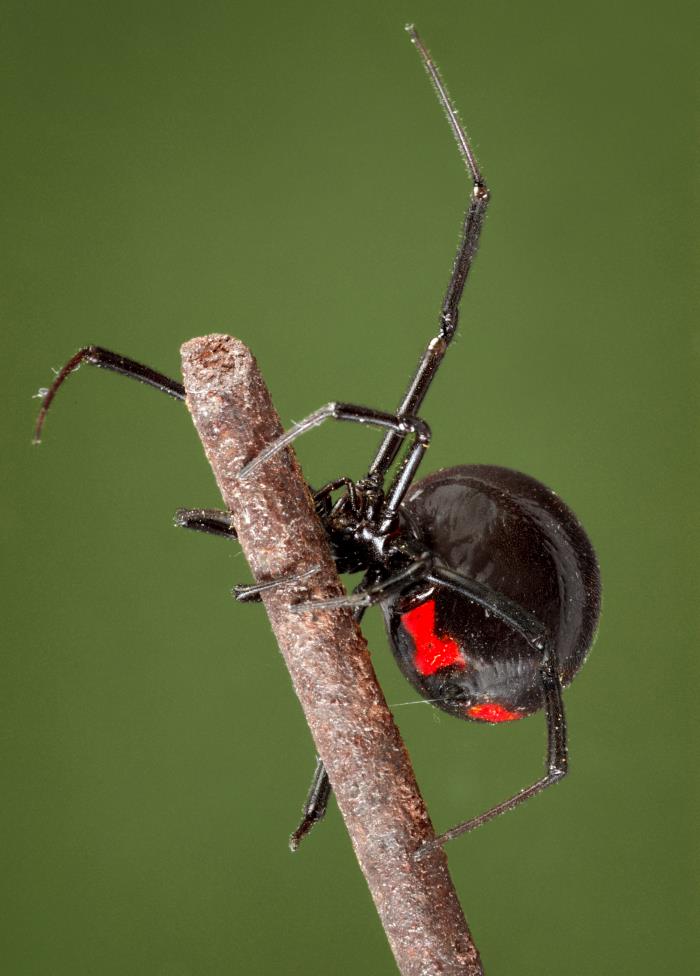Spider bites are a rare cause of morbidity Morbidity The proportion of patients with a particular disease during a given year per given unit of population. Measures of Health Status and mortality Mortality All deaths reported in a given population. Measures of Health Status. Almost all spiders are venomous, but the majority do not have the ability to penetrate skin Skin The skin, also referred to as the integumentary system, is the largest organ of the body. The skin is primarily composed of the epidermis (outer layer) and dermis (deep layer). The epidermis is primarily composed of keratinocytes that undergo rapid turnover, while the dermis contains dense layers of connective tissue. Skin: Structure and Functions for envenomation. Brown recluse and black widow spiders are the most common causes of serious systemic reactions in the United States. The brown recluse spider contains a necrotizing venom that can lead to a painful, blistering, necrotic wound, which can be complicated by fevers, myalgias Myalgias Painful sensation in the muscles. Tick-borne Encephalitis Virus, hemolysis, seizures Seizures A seizure is abnormal electrical activity of the neurons in the cerebral cortex that can manifest in numerous ways depending on the region of the brain affected. Seizures consist of a sudden imbalance that occurs between the excitatory and inhibitory signals in cortical neurons, creating a net excitation. The 2 major classes of seizures are focal and generalized. Seizures, and renal failure Renal failure Conditions in which the kidneys perform below the normal level in the ability to remove wastes, concentrate urine, and maintain electrolyte balance; blood pressure; and calcium metabolism. Renal insufficiency can be classified by the degree of kidney damage (as measured by the level of proteinuria) and reduction in glomerular filtration rate. Crush Syndrome. Black widow spiders have a neurotoxic venom that can cause muscle cramping and rigidity Rigidity Continuous involuntary sustained muscle contraction which is often a manifestation of basal ganglia diseases. When an affected muscle is passively stretched, the degree of resistance remains constant regardless of the rate at which the muscle is stretched. This feature helps to distinguish rigidity from muscle spasticity. Megacolon (often manifesting as severe abdominal pain Abdominal Pain Acute Abdomen), vital sign instability, lacrimation and salivation, ptosis Ptosis Cranial Nerve Palsies, and respiratory distress. The diagnosis is clinical. Management includes wound care, pain Pain An unpleasant sensation induced by noxious stimuli which are detected by nerve endings of nociceptive neurons. Pain: Types and Pathways management, supportive care for systemic symptoms, antivenom for black widow bites, and delayed debridement Debridement The removal of foreign material and devitalized or contaminated tissue from or adjacent to a traumatic or infected lesion until surrounding healthy tissue is exposed. Stevens-Johnson Syndrome of necrotic tissue in brown recluse bites.
Last updated: Dec 15, 2025
In the United States, the following spider bites can result in serious systemic symptoms:
Brown recluse spider:

The highly venomous brown recluse spider Loxosceles reclusa:
Note the characteristic violin-shaped marking visible on its dorsal cephalothorax.
Black widow spider:

A female black widow spider, Latrodectus mactans, in the process of spinning her web upon a tree branch:
Note the characteristic red hourglass located on her inferior abdominal surface, which can vary in coloration from yellowish to shades of orange and red. The female’s body is a shiny, jet-black color.

Localized tissue necrosis on the skin due to a brown recluse spider bite. This condition occurs due to the venom’s proteolytic enzymes.
Image: “6266” by CDC. License: Public Domain
Necrotic, ulcerated wound from a brown recluse spider bite
Image: “6265” by CDC. License: Public Domain
A patient presenting with periorbital swelling after having been bitten on the face by a brown recluse spider
Image: “6251” by M.A. Parsons/Dr. G. Rosenfeld. License: Public DomainSpider bites are a clinical diagnosis.
“NOT RECLUSE” can help exclude the diagnosis of a brown recluse spider bite: